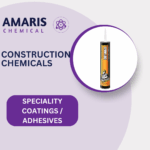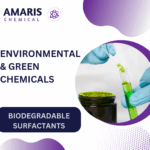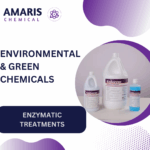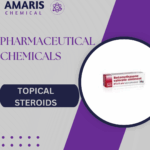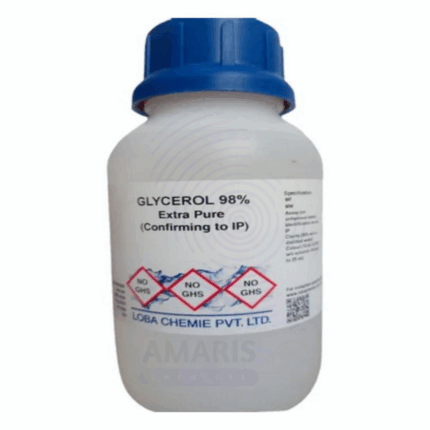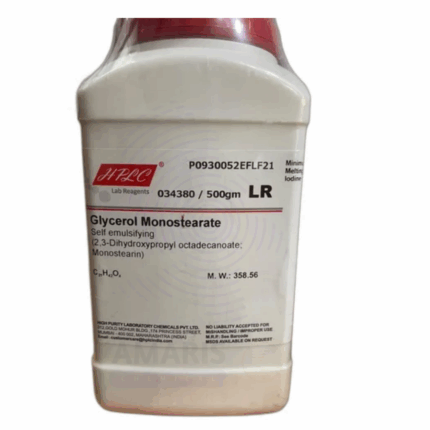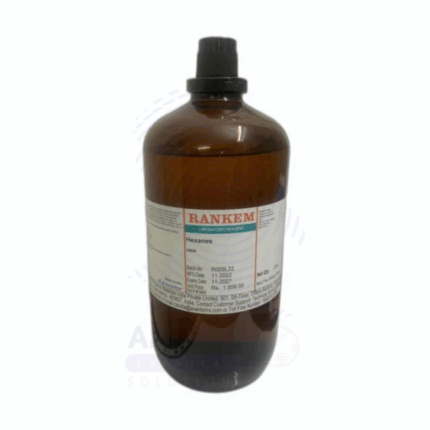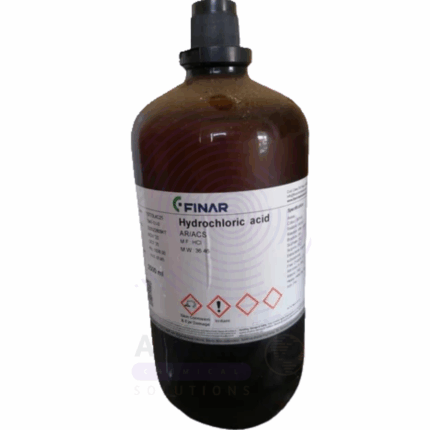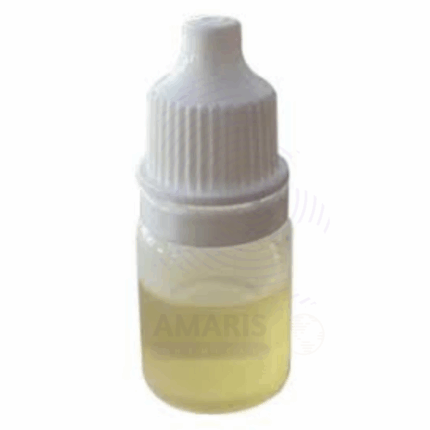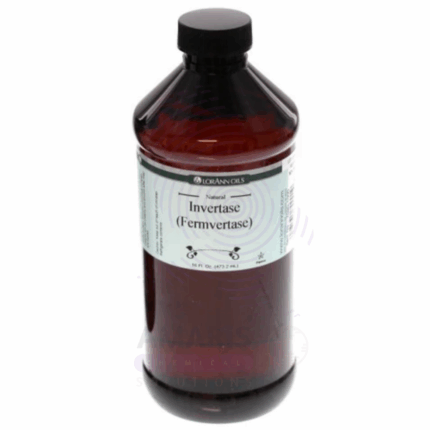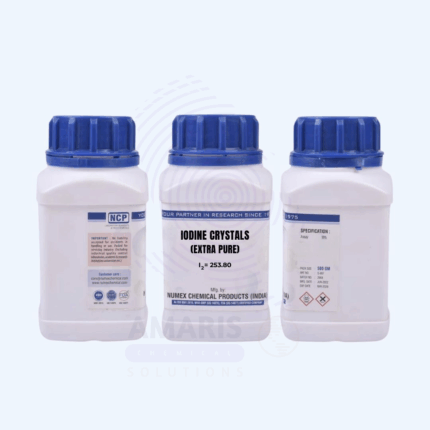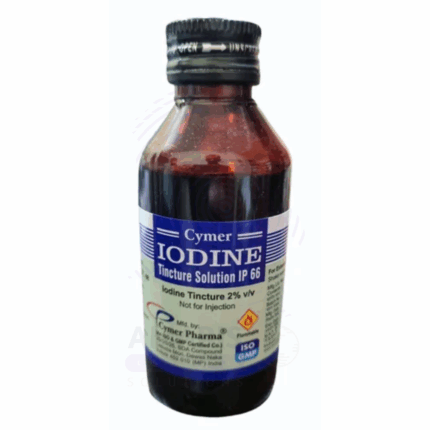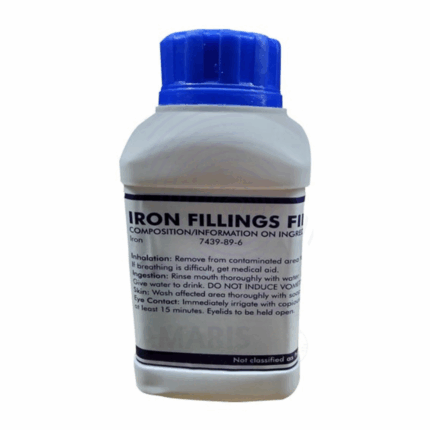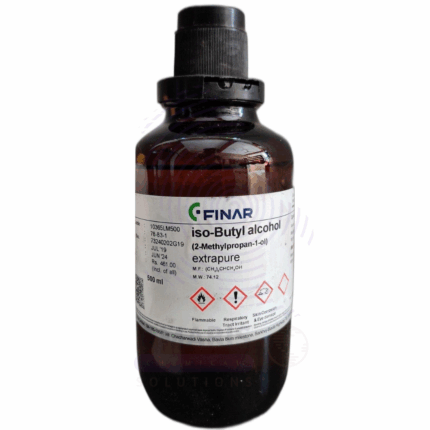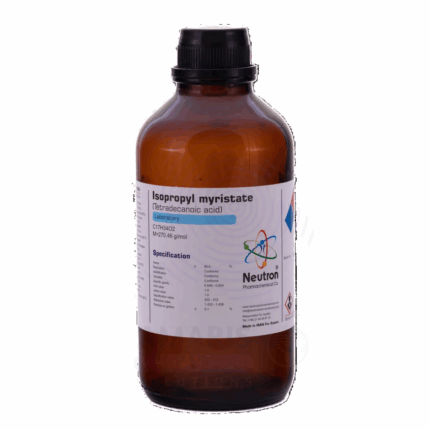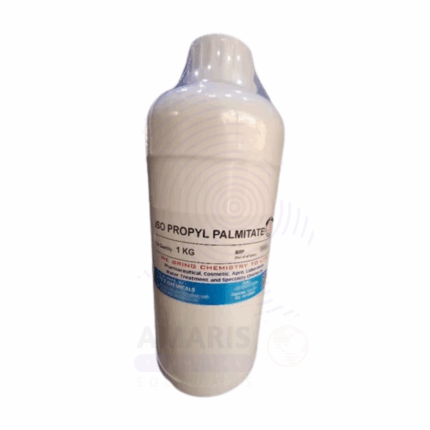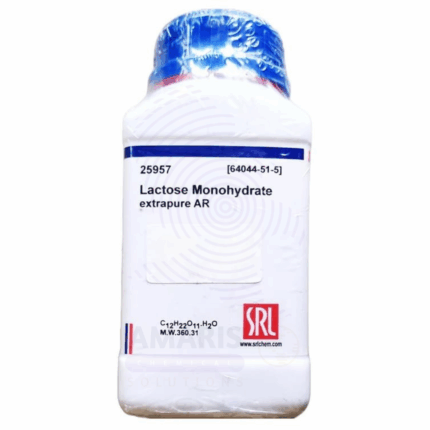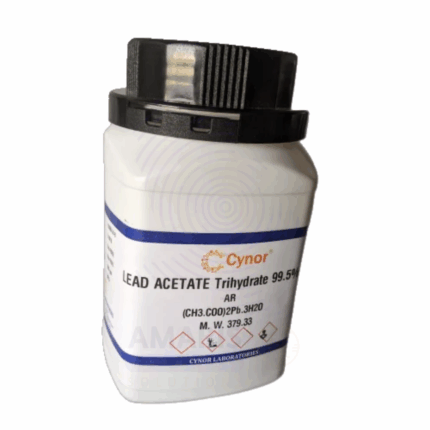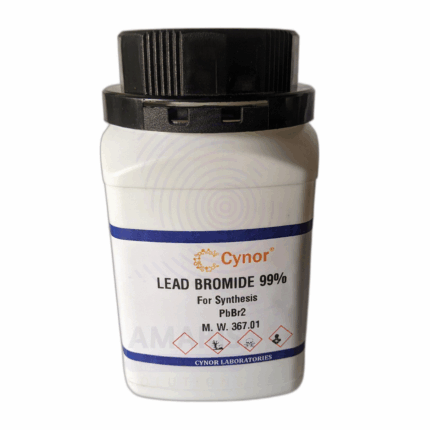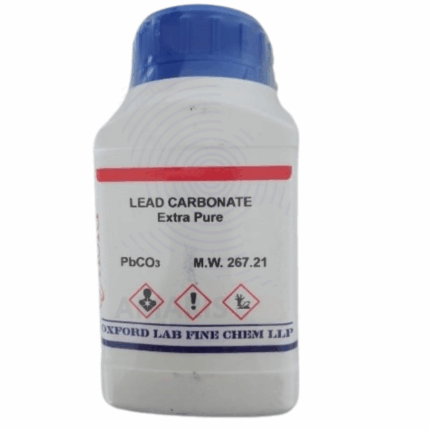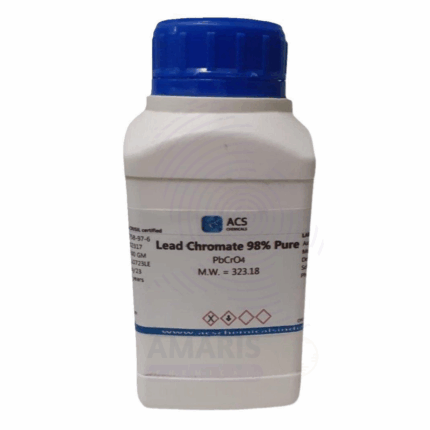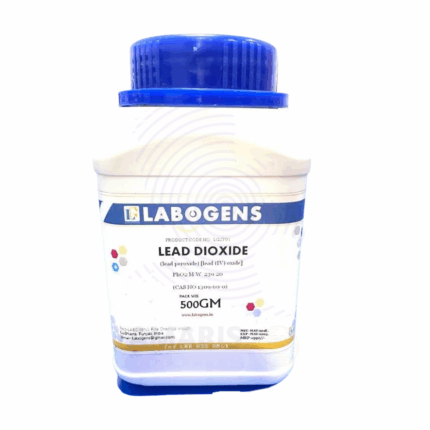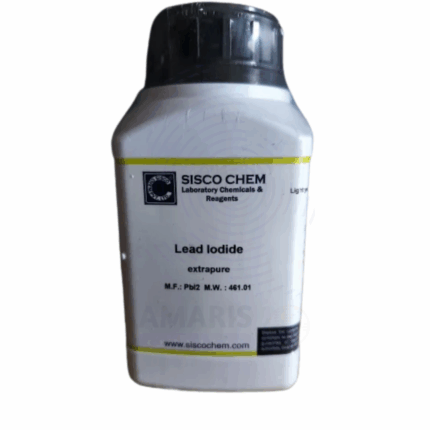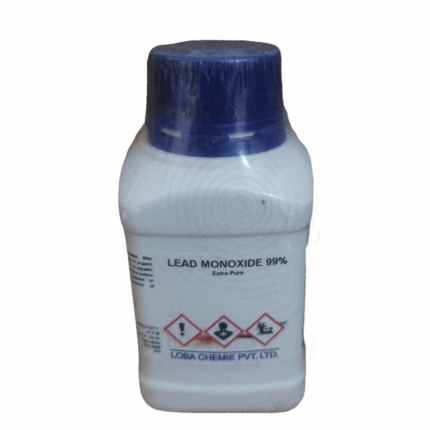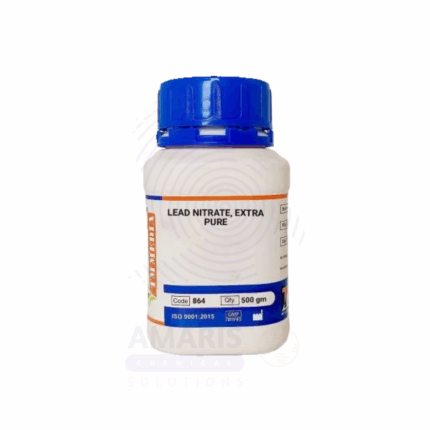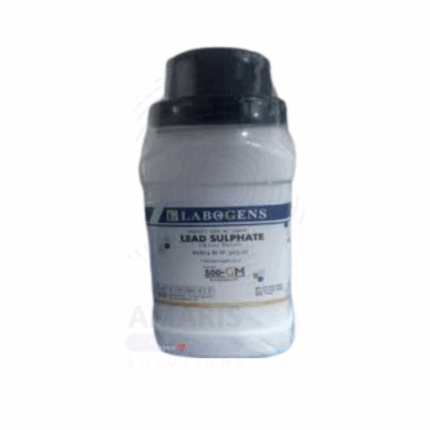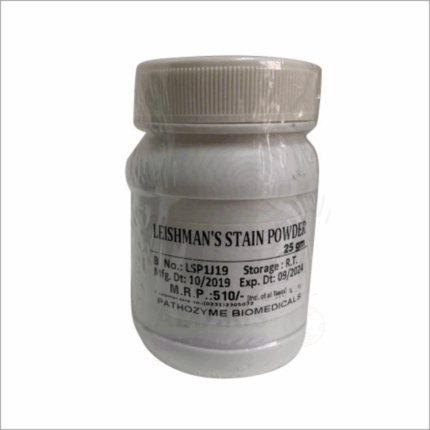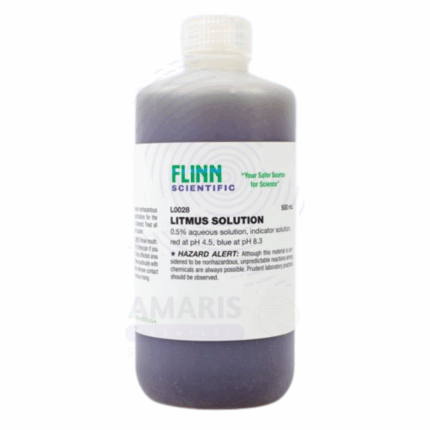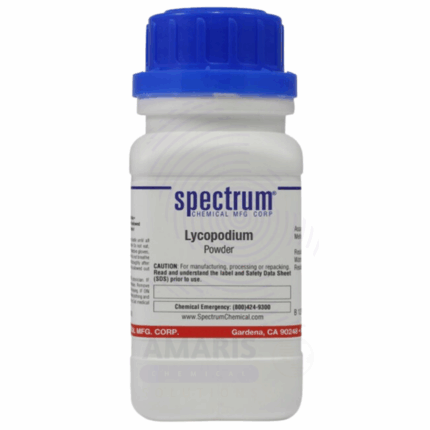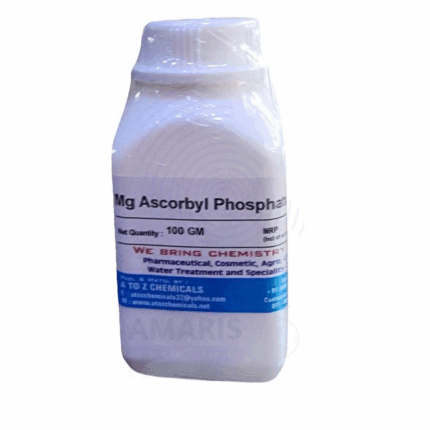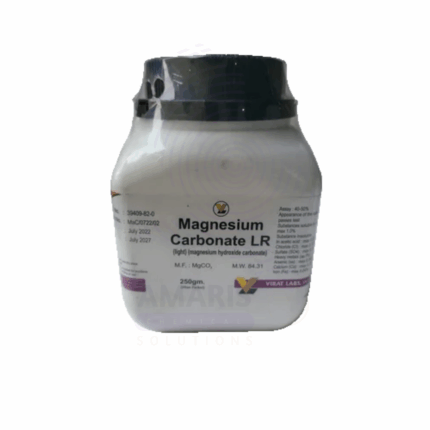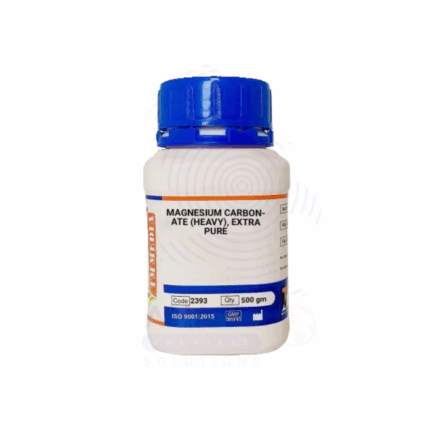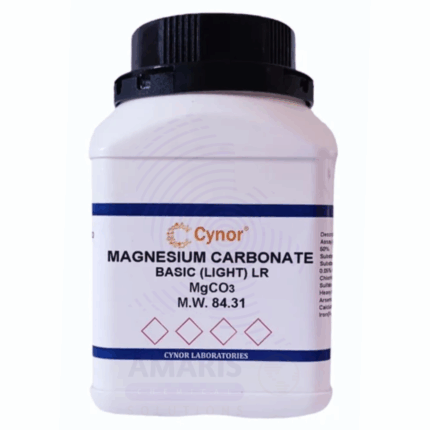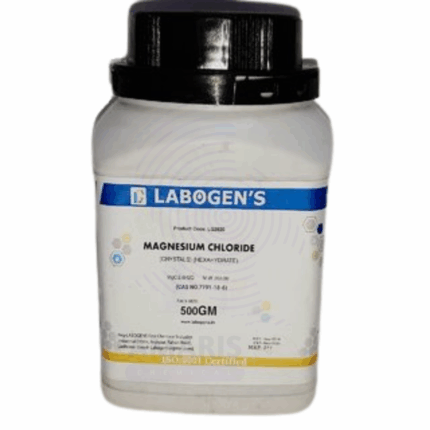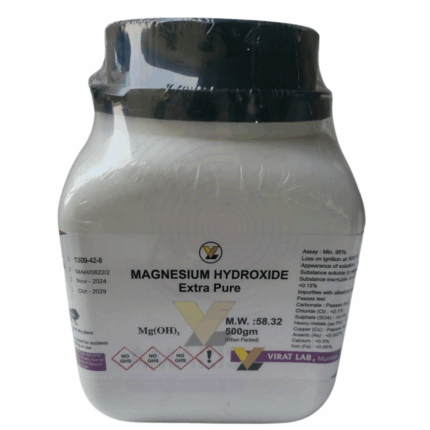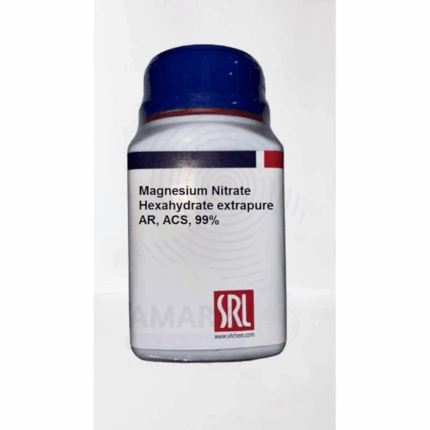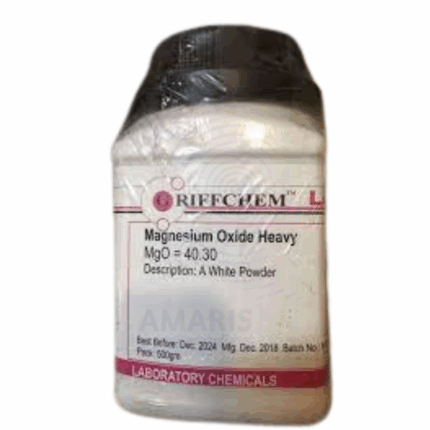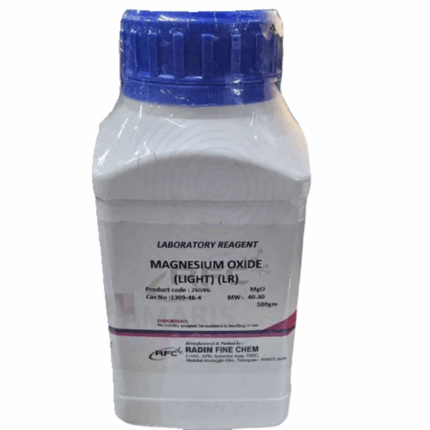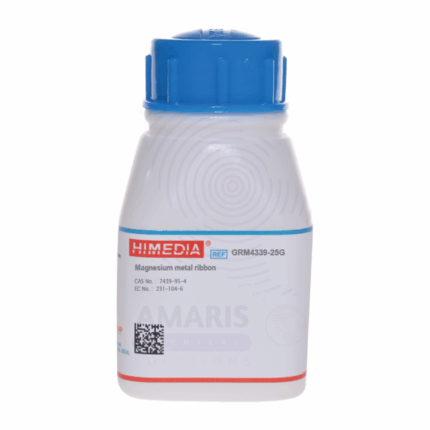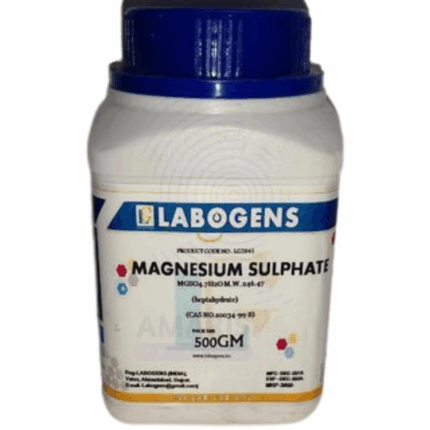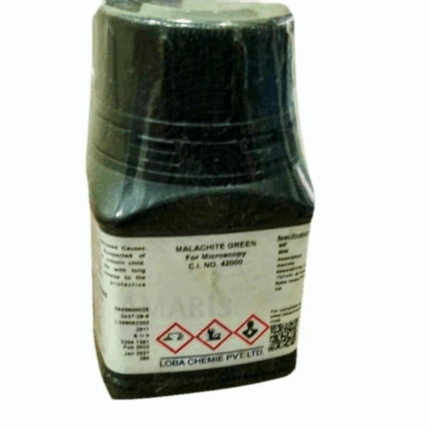
Formic Acid Extra Pure
Formic Acid Extra Pure is a colorless, pungent-smelling liquid with exceptional purity, making it ideal for high-precision laboratory and industrial applications. It is the simplest carboxylic acid and serves as a key reagent in organic synthesis, chromatography, and chemical analysis. Its high acidity and reducing properties make it useful in textile dyeing, leather tanning, electroplating baths, and as a preservative in livestock feed. In the lab, it is also used to adjust pH in sensitive reactions and in protein and peptide analysis. The extra pure grade ensures minimal contamination, which is critical for research-grade and analytical procedures.
Fructose Extra Pure
Fructose Extra Pure is a high-purity, naturally occurring monosaccharide renowned for its intense sweetness and excellent solubility. Widely used in laboratory research, food analysis, and pharmaceutical formulations, it serves as a key carbohydrate reference and energy source in various biochemical applications. Its high reactivity and compatibility with a range of analytical techniques make it ideal for testing and formulation development in nutritional science, fermentation processes, and metabolic studies. The extra pure grade ensures minimal interference from impurities, making it suitable for precision-sensitive environments.
Fumaric Acid Extra Pure
Fumaric Acid Extra Pure is a white crystalline organic compound known for its use as a food acidulant, a chemical intermediate, and a reagent in laboratory analysis. This trans-isomer of butenedioic acid plays a significant role in the Krebs cycle and is commonly used in biochemical and pharmaceutical research. In laboratories, it serves as a standard for titrations and a pH modifier in formulations. Its excellent stability, solubility in alcohol, and high purity make it suitable for precision applications, including quality control testing, analytical chemistry, and synthesis of esters and resins.
Glycerol Monostearate Extra Pure
Glycerol Monostearate Extra Pure is a high-purity, white, odorless, and tasteless powder or flake widely used as an emulsifier, thickening agent, and stabilizer. In laboratory and industrial settings, it is particularly valuable for its role in forming stable emulsions in aqueous and oily systems. Commonly used in food science experiments, pharmaceutical formulations, and cosmetic product development, GMS improves consistency and shelf-life. It also serves as a dispersing agent and plasticizer in various polymer applications. Its extra pure grade ensures reliable performance where precision and chemical cleanliness are required.
Hexane Extra Pure
Hexane Extra Pure is a high-purity, colorless liquid hydrocarbon known for its low boiling point and excellent solvency properties. It is extensively used in laboratories as a non-polar solvent for extractions, chromatography, and purification processes. Due to its volatility and ability to dissolve oils and fats, hexane is also employed in the preparation of samples for analysis, especially in organic chemistry and analytical laboratories. Its extra pure grade ensures minimal impurities, making it suitable for critical applications in pharmaceutical research, food testing, and industrial quality control.
High Temperature Grease Extra Pure
High Temperature Grease Extra Pure is a premium-grade lubricant formulated to perform reliably under extreme heat and pressure conditions. It is designed for use in high-temperature environments where conventional greases may break down, such as in bearings, ovens, kilns, and heavy industrial machinery. With excellent thermal stability, water resistance, and oxidation resistance, this grease ensures long-lasting protection against wear, corrosion, and metal-to-metal contact. Its extra pure formulation makes it ideal for laboratory, precision engineering, and specialty manufacturing applications where contamination control and performance are critical.
Hoffman Voltameter Complete
Hoffman Voltameter Complete is a comprehensive electrolysis apparatus designed for the demonstration and measurement of water decomposition into hydrogen and oxygen gases. The complete setup includes a borosilicate glass main body with two graduated vertical tubes, platinum or carbon electrodes, rubber stoppers or connections, and an electrode support stand for stability. It is widely used in educational, research, and analytical settings to demonstrate the fundamental principles of electrolysis, redox reactions, and gas laws. The apparatus allows for accurate measurement of the gas volumes produced, typically in a 2:1 hydrogen-to-oxygen ratio, verifying stoichiometric relationships in chemical reactions.
Hydrochloric Acid Extra Pure
Hydrochloric Acid Extra Pure is a highly concentrated and refined form of HCl, known for its exceptional purity and reliability in laboratory and analytical applications. This strong, corrosive mineral acid is commonly used for pH regulation, sample digestion, metal cleaning, and inorganic compound synthesis. Its extra pure grade ensures minimal impurities, making it suitable for high-precision chemical analysis, reagent preparation, and critical industrial processes. Due to its reactive and volatile nature, it must be handled with care under well-ventilated conditions and stored in corrosion-resistant containers.
Hydrochloric Acid HCL
Hydrochloric Acid HCL is a highly corrosive, strong mineral acid consisting of hydrogen chloride gas dissolved in water to a concentration of approximately 33% by weight. It appears as a clear, colorless to slightly yellow liquid with a sharp, pungent odor. HCl 33% is widely used in industrial, chemical, and laboratory applications due to its strong acidic properties, high reactivity, and versatility. It plays a crucial role in pH control, metal processing, chemical synthesis, and cleaning processes across numerous sectors.
Hydrogen Peroxide Extra Pure
Hydrogen Peroxide Extra Pure is a clear, colorless liquid widely used as a strong oxidizing agent in laboratory and industrial settings. This high-purity grade ensures minimal contamination, making it ideal for analytical chemistry, disinfection, bleaching, and redox reactions. In research labs, it serves as a reliable reagent for oxidation processes and sterilization. Its extra pure formulation enhances consistency and accuracy in sensitive procedures. Due to its reactive and potentially unstable nature, it should be stored in cool, dark conditions in vented containers and handled with appropriate protective equipment.
Immersion Oil
Immersion Oil is a high-purity, optically transparent oil used primarily in microscopy to enhance the resolution of high-power objectives. Applied between the microscope objective lens and the cover glass, immersion oil reduces light refraction and increases numerical aperture, allowing for clearer and more detailed imaging. It is colorless, non-drying, and has a refractive index closely matching that of glass (typically around 1.515).
This 50ml volume is ideal for laboratory, clinical, and educational settings where precision microscopy work is performed. Immersion oil is formulated to be chemically stable, non-drying, and safe for delicate optics when used correctly.
Iodine Crystals Extra Pure
Iodine Crystals Extra Pure are dark violet, lustrous flakes known for their high purity and reliable reactivity. They are widely used in analytical chemistry, pharmaceutical formulations, and as a key reagent in iodine value determination, starch testing, and microbial staining. Their antiseptic properties also make them useful in disinfection and laboratory microbiology. Due to their sublimation tendency, iodine crystals should be stored in tightly sealed containers in a cool, dry, and well-ventilated area. Their purity ensures minimal contamination, making them ideal for precision work in research and educational laboratories.
Iodine Tincture Extra Pure
Iodine Tincture Extra Pure is a high-quality antiseptic solution composed of elemental iodine dissolved in a mixture of alcohol and potassium iodide. It is widely used for disinfecting wounds, sterilizing skin before medical procedures, and as a laboratory reagent in various analytical and microbiological applications. Its fast-acting antimicrobial properties make it effective against bacteria, viruses, and fungi. In laboratory settings, it serves as a reliable indicator and staining agent. Due to its volatility and staining nature, the tincture should be handled with care and stored in tightly closed, amber-colored bottles to preserve stability and prevent degradation.
Isobutyl Alcohol Extra Pure
Isobutyl Alcohol Extra Pure is a high-purity, branched-chain aliphatic alcohol with the chemical formula C₄H₁₀O. It appears as a clear, colorless liquid with a characteristic odor and is highly soluble in organic solvents while only moderately soluble in water. This compound is commonly used in laboratories as a solvent for resins, oils, and other organic compounds, as well as in the synthesis of esters and plasticizers. Due to its volatility and purity, Isobutyl Alcohol is valuable in analytical procedures, chemical research, and as a standard in gas chromatography. Proper storage in tightly sealed containers away from heat and ignition sources is essential due to its flammability.
Isopropyl Myristate Extra Pure
Isopropyl Myristate Extra Pure is a high-purity ester derived from isopropyl alcohol and myristic acid, commonly used for its excellent solvent and emollient properties. It appears as a colorless to slightly yellow, oily liquid with a faint odor. In laboratory and cosmetic settings, it serves as a solvent and carrier for active ingredients, particularly in topical formulations, where it enhances skin absorption without leaving a greasy residue. Its purity makes it suitable for precise formulation work in pharmaceutical, cosmetic, and personal care research. Isopropyl Myristate is also used in the preparation of perfumes and as a penetration enhancer in transdermal drug delivery systems.
Isopropyl Palmitate Extra Pure
Isopropyl Palmitate Extra Pure is a highly refined ester of isopropyl alcohol and palmitic acid, known for its exceptional emollient, spreading, and moisturizing properties. This clear, colorless to pale yellow liquid is widely used in laboratory formulations focused on cosmetic, pharmaceutical, and personal care research. It is especially valued for its ability to impart a smooth, silky texture without an oily feel, making it ideal for lotions, creams, and topical products. In experimental applications, Isopropyl Palmitate serves as a non-greasy carrier, solvent, or skin-conditioning agent, aiding in the delivery of active compounds through the skin. Its extra pure grade ensures consistent performance and minimal impurities for sensitive applications.
Lactose Monohydrate Extra Pure
Lactose Monohydrate Extra Pure is a high-purity, crystalline disaccharide composed of glucose and galactose, containing one molecule of water per lactose unit. It is widely used in laboratory settings for biochemical research, nutrient media preparation, and as an excipient in pharmaceutical formulation studies. Its consistent solubility and stability make it ideal for carbohydrate analysis, fermentation experiments, and as a mild reducing sugar in analytical reactions. The extra pure grade ensures low impurity levels, supporting accurate and reproducible results in sensitive scientific applications. Proper storage in a cool, dry environment is essential to maintain its crystalline form and prevent caking.
Lead Chloride Anhydrous Extra Pure
Lead Chloride Anhydrous Extra Pure is a white crystalline compound with the chemical formula PbCl₂, offered in its high-purity, moisture-free form for specialized applications. It is only sparingly soluble in cold water but dissolves more readily in hot water, forming a clear solution upon heating. This compound is used in laboratory synthesis, particularly in the preparation of other lead-based reagents, and plays a role in ceramic glazing, pigment production, and electrochemical processes. In research, it is also employed in photographic materials, optical devices, and inorganic analysis. Due to the toxic nature of lead compounds, strict safety protocols are necessary during storage and handling.
Lead Dioxide Extra Pure
Lead Dioxide Extra Pure is a dark brown or black crystalline powder with the chemical formula PbO₂, recognized for its strong oxidizing properties and high purity suitable for laboratory-grade applications. This compound is primarily used in electrochemical experiments, oxidation reactions, and battery research, especially in the development and maintenance of lead-acid batteries where it functions as the active material on the positive plate. In analytical chemistry, it is employed as an oxidizing agent and for synthesizing other lead compounds. Its stability and performance under controlled conditions make it valuable for advanced scientific research and industrial formulation trials. Due to its toxic and environmentally hazardous nature, strict safety protocols are necessary during handling and disposal.
Lead Iodide Extra Pure
Lead Iodide Extra Pure is a bright yellow crystalline compound with the formula PbI₂, known for its striking color and high chemical purity, making it ideal for laboratory and research use. It is commonly used in materials science, especially in the fabrication of perovskite solar cells and semiconductors, due to its optical properties and ability to form thin films. In academic research, it plays a role in crystal growth experiments, and its distinct color change upon heating serves as a classic demonstration in chemistry education. Owing to its lead content, appropriate handling precautions and environmental safeguards are essential when working with this compound.
Lead Monoxide Extra Pure
Lead Monoxide Extra Pure, also known as litharge (PbO), is a fine yellow or reddish powder widely used in analytical chemistry and industrial processes. Its high purity makes it suitable for laboratory-grade reactions, especially in the manufacture of lead-based compounds, ceramics, glass, and batteries. In the ceramics and glass industries, it enhances the brilliance and stability of glazes and optical glass. In metallurgy, it is used as a fluxing agent during refining. Due to its toxicity and lead content, it requires strict safety handling procedures and controlled storage conditions to prevent contamination or exposure.
leclanche cell
Product Description
Leclanché Cell is a primary electrochemical cell commonly used as a standard dry cell battery. It consists of a zinc anode, a carbon rod cathode surrounded by manganese dioxide, and an electrolyte of ammonium chloride paste. Known for its reliability and portability, it is widely used in laboratory demonstrations, educational settings, and portable electrical devices. The cell provides a stable voltage output and serves as a practical example of electrochemical energy conversion.
Leishman Stainpowder Extra Pure
Leishman Stainpowder Extra Pure is a high-quality, finely milled formulation used extensively in hematology and parasitology for the microscopic staining of blood smears. Comprising mainly methylene blue and eosin, this stain is essential for differentiating white and red blood cells, as well as detecting malarial parasites and other blood-borne pathogens. Its excellent staining clarity and consistency make it a staple in clinical laboratories, diagnostic centers, and research institutions. The powder is reconstituted in methanol before use and must be handled with care, avoiding inhalation or contact with skin and eyes. Proper storage in a dry, cool environment ensures long-term stability and performance.
Litmus Granular Extra Pure
Litmus Granular Extra Pure is a premium-grade pH indicator widely used in laboratories for acid-base testing and educational demonstrations. Derived from natural sources like lichens, this granular form offers a stable, easy-to-handle format suitable for preparing litmus solutions or impregnating test papers. In acidic environments, it turns red, while in alkaline conditions, it turns blue, providing a clear visual response. Its high purity ensures reliable and repeatable results across various applications in chemistry, biology, and environmental testing. Store in a tightly sealed container away from moisture and direct sunlight to preserve its effectiveness.
Litmus Solution Extra Pure
Litmus Solution Extra Pure is a high-quality, ready-to-use pH indicator solution designed for precise acid-base testing in laboratories and educational settings. Made from purified natural litmus dye, it changes color distinctly—red in acidic solutions and blue in alkaline solutions—making it an essential tool for quick and accurate pH assessments. Its extra pure formulation ensures consistent performance, clear color transitions, and reliability in analytical chemistry, biology experiments, and environmental monitoring. Ideal for titrations and classroom demonstrations, this solution should be stored in a cool, dark place to maintain stability and color accuracy.
Lugols Iodine Extra Pure
Lugols Iodine Extra Pure is a superior-grade aqueous solution composed of elemental iodine and potassium iodide, known for its wide-ranging applications in laboratories, microscopy, and medical diagnostics. Valued for its strong staining properties, it is commonly used in biology to identify starch in plant cells and as a general-purpose cellular stain to enhance visibility under a microscope. Its extra pure formulation ensures high clarity, minimal impurities, and consistent results in sensitive applications. Additionally, it plays a role in preparing specimens, sterilization procedures, and certain medical antiseptic practices. Store tightly sealed, away from light and heat, to preserve potency.
Lycopodium Powder Extra Pure
Lycopodium Powder Extra Pure is a fine, yellowish powder derived from the spores of club moss plants, prized for its exceptional purity and versatility in both scientific and industrial applications. In laboratories, it is frequently used to demonstrate Brownian motion, study spore dispersion, or simulate particulate flow in airflow experiments. Due to its high flammability, Lycopodium powder also serves as a dramatic visual aid in physics demonstrations involving flame propagation or combustion. Outside the lab, it has niche applications in pharmaceuticals, cosmetics, and even pyrotechnics. It should be handled with care and stored in a dry, cool, and non-igniting environment.
Magnesium Ascorbyl Phosphate Extra Pure
Magnesium Ascorbyl Phosphate Extra Pure is a highly stable, water-soluble derivative of Vitamin C, widely appreciated for its exceptional antioxidant properties and gentle skin compatibility. Commonly used in cosmetic and dermatological formulations, it helps brighten the skin, reduce hyperpigmentation, and support collagen synthesis—making it a valuable ingredient in anti-aging and skin-repair treatments. Its stability against oxidation allows it to retain potency longer than pure ascorbic acid, especially in aqueous solutions. With pharmaceutical and cosmetic grade purity, this compound is ideal for use in serums, lotions, and creams targeting a healthy, radiant complexion.
Magnesium Chloride Extra Pure
Magnesium Chloride Extra Pure is a highly soluble, refined chemical compound commonly used for its excellent hygroscopic and electrolyte properties. In laboratory and analytical settings, it is valued for preparing magnesium-based solutions and as a reagent in various chemical reactions. In pharmaceuticals, it serves as a magnesium supplement, aiding in nerve function and muscle health. It is also used in cosmetics and personal care products for its skin-conditioning benefits. Additionally, it finds applications in textile processing, dust control, and de-icing formulations, where its purity ensures minimal impurities in sensitive applications.
Magnesium Hydroxide Heavy Extra Pure
Magnesium Hydroxide Heavy Extra Pure is a high-purity, dense white powder widely utilized for its antacid and absorbent properties. In pharmaceutical formulations, it acts as a gentle laxative and an effective antacid to neutralize stomach acid. Due to its high purity, it is also used in laboratory experiments and analytical chemistry where precise reactions are essential. In cosmetic and personal care products, it functions as a pH adjuster and an absorbent in creams, lotions, and deodorants. Additionally, it serves roles in wastewater treatment, flame retardants, and ceramic manufacturing, offering consistent performance and low impurity content.
Magnesium Nitrate Hexahydrate Extra Pure
Magnesium Nitrate Hexahydrate Extra Pure is a crystalline compound known for its high solubility in water and exceptional purity, making it suitable for both laboratory and industrial applications. In analytical chemistry, it is commonly used as a reagent for preparing standard solutions and as a source of magnesium ions in various experimental procedures. Its oxidizing properties make it valuable in pyrotechnics and fertilizer formulations, where it provides essential nutrients for plant growth. This compound is also employed in ceramic production, textile treatments, and catalyst preparations, where a consistent, high-quality nitrate source is required. Its extra pure grade ensures minimal contamination, essential for high-precision work.
Magnesium Oxide Heavy Extra Pure
Magnesium Oxide Heavy Extra Pure is a high-purity, dense white powder prized for its excellent thermal stability, high melting point, and chemical inertness. It is widely used in laboratory applications as a standard reagent, pH adjuster, and desiccant. In pharmaceuticals, it functions as an antacid and a magnesium supplement, while in industrial processes, it is essential for producing refractory materials, ceramics, and insulating products due to its high heat resistance. The "heavy" form refers to its higher bulk density, making it particularly useful in applications where volume constraints are critical. Its extra pure grade ensures it meets the stringent demands of high-precision research and formulation work.
Magnesium Oxide Light Powder Extra Pure
Magnesium Oxide Light Powder Extra Pure is a fine, white, odorless powder with a lower bulk density compared to the heavy grade, offering high surface area and excellent reactivity. It is widely used in analytical laboratories, pharmaceuticals, and cosmetics due to its purity and gentle chemical behavior. In pharmaceutical formulations, it acts as an antacid and magnesium supplement, while in cosmetics, it is used for its absorbent and pH-adjusting properties. Its light, fluffy texture also makes it ideal for use in rubber, plastics, and coatings as a filler, stabilizer, or neutralizing agent. The extra pure grade ensures consistent quality for precise and sensitive applications.
Magnesium Sulphate Extra Pure
Magnesium Sulphate Extra Pure is a high-purity, inorganic compound commonly appearing as a white crystalline powder or granules. It is primarily valued in laboratories for its role as a source of magnesium ions in chemical analysis and biological experiments. This compound is widely used in buffer preparation, dehydration processes, and precipitation reactions due to its excellent solubility in water. In addition to lab applications, it also serves purposes in pharmaceutical formulations, cosmetics, and agriculture as a magnesium supplement. Its extra pure grade ensures minimal impurities, making it suitable for sensitive research and analytical tasks.
Malachite Green Extra Pure
Malachite Green Extra Pure is a synthetic dye of exceptional purity, recognized for its intense green coloration and versatile laboratory uses. It is commonly used as a biological stain, especially in microbiology for identifying and differentiating bacterial species, and in histology for staining cell structures. Additionally, Malachite Green serves as an effective fungicide and antiparasitic agent in aquaculture and laboratory testing. Its high purity ensures reliable performance in analytical applications, including redox titrations and as a pH indicator in specific chemical reactions. Its vivid color and chemical stability make it a valuable reagent in both teaching and professional research settings.


 Preservatives(food)
Preservatives(food) Flavor Enhancers
Flavor Enhancers Acidulants
Acidulants Sweeteners
Sweeteners Antioxidants
Antioxidants Colorants(food)
Colorants(food) Nutraceutical Ingredients (food)
Nutraceutical Ingredients (food) Nutrient Supplements
Nutrient Supplements Emulsifiers
Emulsifiers
 Collectors
Collectors Dust Suppressants
Dust Suppressants Explosives and Blasting Agents
Explosives and Blasting Agents Flocculants and Coagulants
Flocculants and Coagulants Frothers
Frothers Leaching Agents
Leaching Agents pH Modifiers
pH Modifiers Precious Metal Extraction Agents
Precious Metal Extraction Agents
 Antioxidants(plastic)
Antioxidants(plastic) Colorants (Pigments, Dyes)
Colorants (Pigments, Dyes) Fillers and Reinforcements
Fillers and Reinforcements Flame Retardants
Flame Retardants Monomers
Monomers Plasticizers
Plasticizers Polymerization Initiators
Polymerization Initiators Stabilizers (UV, Heat)
Stabilizers (UV, Heat)
 Antifoaming Agents
Antifoaming Agents Chelating Agents
Chelating Agents Coagulants and Flocculants
Coagulants and Flocculants Corrosion Inhibitors
Corrosion Inhibitors Disinfectants and Biocides
Disinfectants and Biocides Oxidizing Agents
Oxidizing Agents pH Adjusters
pH Adjusters Scale Inhibitors( water)
Scale Inhibitors( water)
 Antioxidants(cosmetic)
Antioxidants(cosmetic) Emollients
Emollients Fragrances and Essential Oils
Fragrances and Essential Oils Humectants
Humectants Preservatives
Preservatives Surfactants(cosmetic)
Surfactants(cosmetic) Thickeners
Thickeners UV Filters
UV Filters
 Fertilizers
Fertilizers Soil Conditioners
Soil Conditioners Plant Growth Regulators
Plant Growth Regulators Animal Feed Additives
Animal Feed Additives Biostimulants
Biostimulants Pesticides (Herbicides, Insecticides, Fungicides)
Pesticides (Herbicides, Insecticides, Fungicides)
 Active Pharmaceutical Ingredients (APIs)
Active Pharmaceutical Ingredients (APIs) Excipients
Excipients Solvents(pharmaceutical)
Solvents(pharmaceutical) Antibiotics
Antibiotics Antiseptics and Disinfectants
Antiseptics and Disinfectants Vaccine Adjuvants
Vaccine Adjuvants Nutraceutical Ingredients (pharmaceutical)
Nutraceutical Ingredients (pharmaceutical) Analgesics & Antipyretics
Analgesics & Antipyretics
 Analytical Reagents
Analytical Reagents Solvents(lab)
Solvents(lab) Chromatography Chemicals
Chromatography Chemicals Spectroscopy Reagents
Spectroscopy Reagents microbiology-and-cell-culture-reagents
microbiology-and-cell-culture-reagents Molecular Biology Reagents
Molecular Biology Reagents Biochemical Reagents
Biochemical Reagents Inorganic and Organic Standards
Inorganic and Organic Standards Laboratory Safety Chemicals
Laboratory Safety Chemicals Specialty Laboratory Chemicals(Special Laboratory Equipment)
Specialty Laboratory Chemicals(Special Laboratory Equipment)
 Demulsifiers
Demulsifiers Hydraulic Fracturing Fluids
Hydraulic Fracturing Fluids Scale Inhibitors(oil)
Scale Inhibitors(oil) Surfactants(oil)
Surfactants(oil) Drilling Fluids
Drilling Fluids
 Dyes and Pigments
Dyes and Pigments Bleaching Agents
Bleaching Agents Softening Agents
Softening Agents Finishing Agents
Finishing Agents Antistatic Agents
Antistatic Agents
 Admixtures
Admixtures Waterproofing Agents
Waterproofing Agents Sealants and Adhesives
Sealants and Adhesives Curing Compounds
Curing Compounds Concrete Repair Chemicals
Concrete Repair Chemicals Anti-Corrosion Coatings
Anti-Corrosion Coatings
 Surfactants(cleaning)
Surfactants(cleaning) Builders
Builders Enzymes
Enzymes Solvents (Cleaning)
Solvents (Cleaning) Fragrances
Fragrances
 Electronic Chemicals
Electronic Chemicals Catalysts
Catalysts Lubricants
Lubricants Photographic Chemicals
Photographic Chemicals Refrigerants
Refrigerants Automotive chemicals
Automotive chemicals Pyrotechnic Chemicals
Pyrotechnic Chemicals
 Biodegradable Surfactants
Biodegradable Surfactants Bio-based Solvents
Bio-based Solvents Renewable Polymers
Renewable Polymers Carbon Capture Chemicals
Carbon Capture Chemicals Wastewater Treatment Chemicals
Wastewater Treatment Chemicals
 Pigments
Pigments Solvents(paint)
Solvents(paint) Specialty Coatings
Specialty Coatings Binders/Resins
Binders/Resins Additives
Additives Driers
Driers Anti-Corrosion Agents
Anti-Corrosion Agents Functional Coatings
Functional Coatings Application-Specific Coatings
Application-Specific Coatings
 Fresh Herbs
Fresh Herbs Ground Spices
Ground Spices Whole Spices
Whole Spices Spice Blends
Spice Blends Dried Herbs
Dried Herbs
 Leavening Agents
Leavening Agents Dough Conditioners
Dough Conditioners Flour Treatments
Flour Treatments Fat Replacers
Fat Replacers Decoratives
Decoratives Preservatives(baking)
Preservatives(baking)
 Plasticizers & Softeners
Plasticizers & Softeners Reinforcing Agents
Reinforcing Agents Adhesion Promoters
Adhesion Promoters Vulcanizing Agents
Vulcanizing Agents Antidegradants
Antidegradants Blowing Agents
Blowing Agents Fillers & Extenders
Fillers & Extenders Accelerators & Retarders
Accelerators & Retarders
